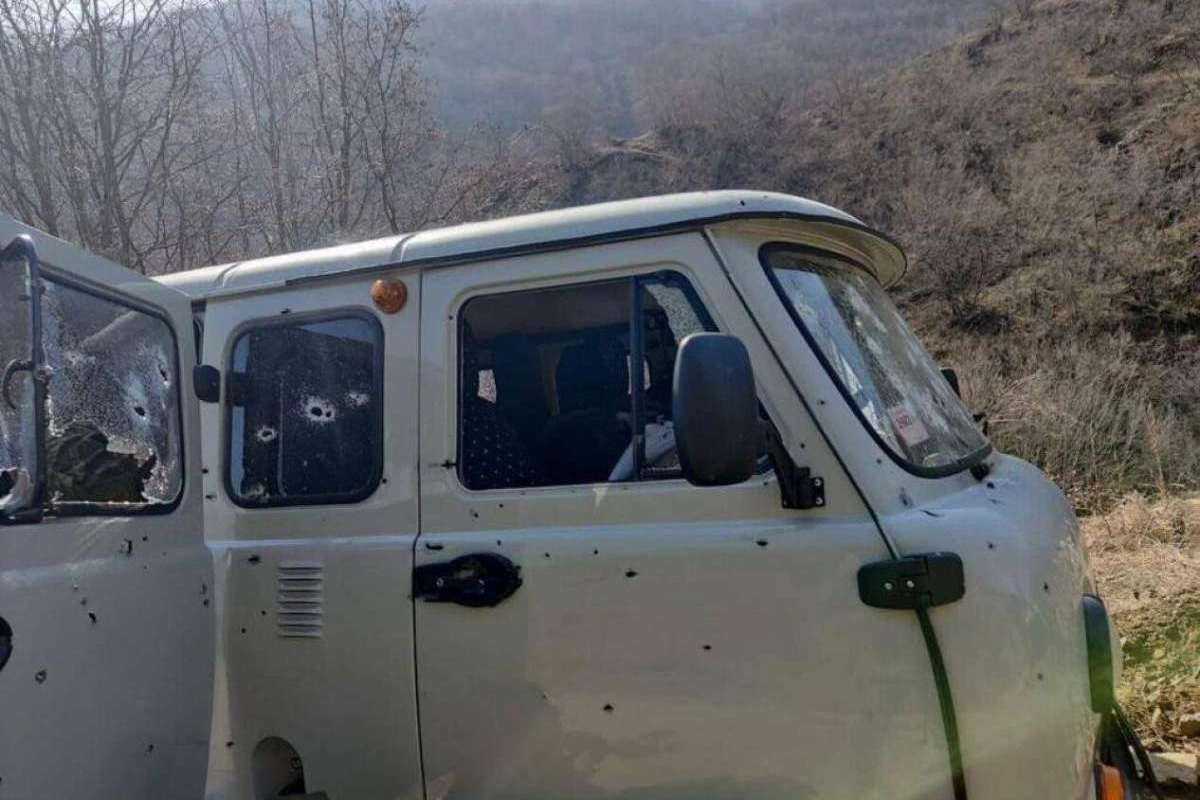
Shootout at Karabakh - Five Dead, What Are the Implications?
At least five people were reported killed around 10 am on Saturday, March 5, in a shootout between Armenians and Azerbaijanis in a lonely rural spot in Karabakh. As with all such incidents, the exact details of the confrontation are disputed, but the flash point was over an Armenian vehicle (misdescribed as a ‘convoy’ in some reports) which Azerbaijani troops suspected of carrying weapons.
The Azerbaijani press named soldiers Alibayli Shahriyar Ramiz and Huseynov Eshgin Jamil as having been “martyred.” Meanwhile, Armenian sources reported that Armen Babayan, Davit Danielyan and Ararat Gasparyan, all police officers of the de-facto region’s ‘Passport and Visa Department,’ had been “gunned down” with a fourth individual hospitalized.
Azerbaijani official reports identify the location of the attack as being along the Khankendi-Khalfali-Turshsu dirt road that essentially parallels the Khankendi-Shusha highway but in the valley to the north. This convoluted route, through almost entirely un/de-populated land, bypasses the Shusha checkpoint on the main Lachin Road, where pro-Baku ‘eco-protesters’ have been controlling transit for the past three months. Armenia calls that a blockade. For Azerbaijan, the routing of any Armenian vehicle on tracks that avoid the sanctioned main road is likely to look suspicious. However, that doesn’t mean that the vehicle needs to be shot at, and the Armenians could argue that – as the route is within the area of Azerbaijan protected by Russian peacekeepers – that Azerbaijani troops have no right to be there under the November 2020 trilateral agreement that ended the 2nd Karabakh War.
Armenian news outlets and commentators have described the incident as an ‘ambush by a sabotage team of the Azerbaijani armed forces’ and insisted that the only weapons the vehicle was carrying were the policemen’s service pistols. A

In

The video also shows a contingent of the Russian peacekeeping force arriving, having been called to intervene. Official Russian reports claim that it was through their efforts that the bloody clash was stopped. It appears that they also facilitated the recovery of bodies after the tragedy.
A statement from Yerevan’s Ministry of Foreign Affairs insisted that the vehicle was heading to Kichik Qaladarasi/Hin Shen, essentially accepting that it had intended to avoid the Shusha checkpoint and the protesters.
While this might allow Baku to claim that the vehicle was using an un-approved road, Yerevan can point to a February 22 provisional measure from the International Court of Justice, which called on Azerbaijan to “ensure unimpeded movement of persons, vehicles and cargo” along the main Lachin road in both directions. This is essentially a call for the removal of the protesters from the Shusha bottleneck.
Meanwhile, Azerbaijan’s Ministry of Defence considers the routing of the unmarked police van to have been a “provocation” and that the incident “demonstrates the importance of establishing a relevant checkpoint by Azerbaijan on the Lachin-Khankendi road.” This is to counter what Baku considers a threat of Armenian forces attempting to smuggle weapons and landmines into the region. On Saturday, the day before this shootout, an Azerbaijani soldier was reported to have been blown up by such a landmine.
Yerevan countered that the “ambush” could not be “described as anything other than terrorism” and that it underlined the “vital necessity” of “sending an international fact-finding mission” to clarify the issues around the Lachin road dispute and the Karabakh peace process in general.
For both sides, the shootout is being held up as an example of the other having gone against the November 2020 trilateral agreement. Yet this comes less than a week after hopeful signs that Azerbaijan and the de facto authorities of the Karabakh Armenians were finally prepared to be seen openly discussing moves toward peace. While the unfortunate shootout incident is a short-term setback, both sides are already using it as a tool to sharpen their media messages as they continue their negotiating goals.
Share on social media